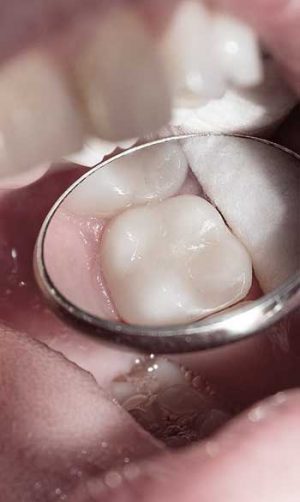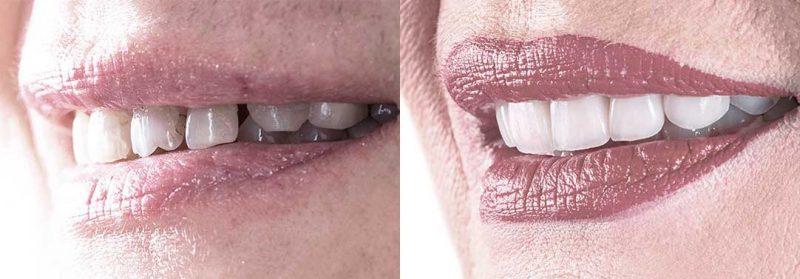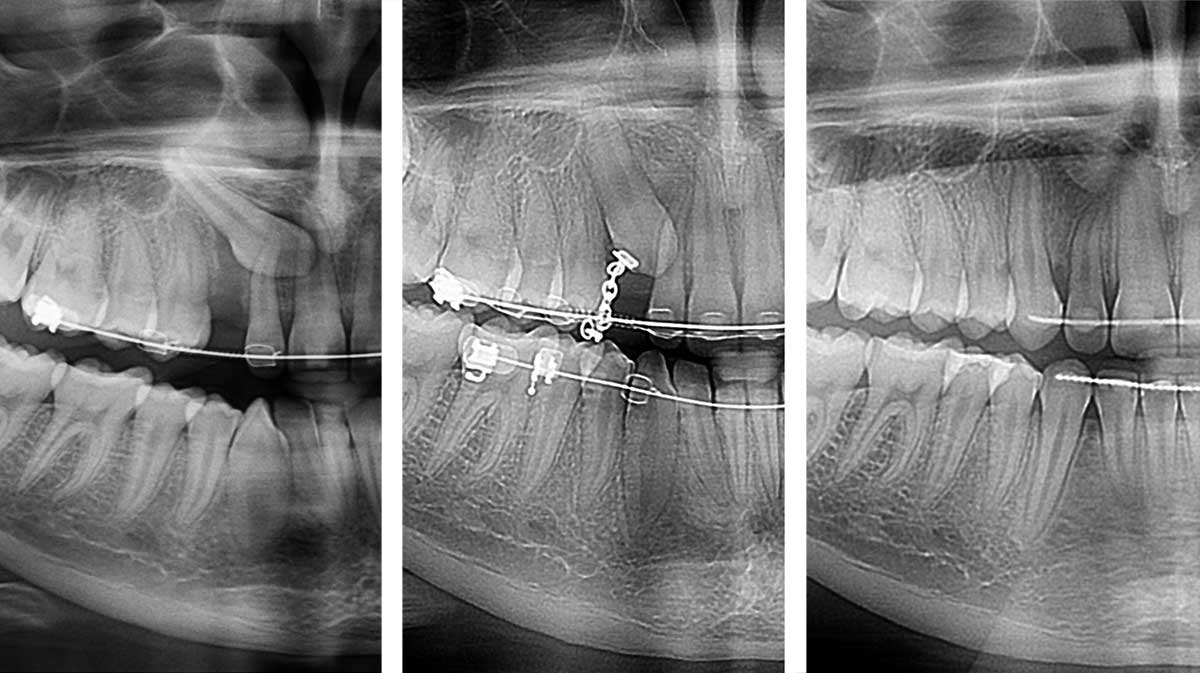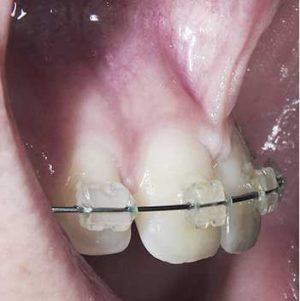The colour of our teeth, together with their alignment and proportions, is key to a beautiful smile. Whitening is a cosmetic procedure that makes your teeth look whiter. Whitening performed by a professional in a dental office is proven to be the safest and have the best result. Patients can also try one of the techniques available for use at home, but they are less effective and carry certain risks.
Professional whitening breaks down macromolecules on the surface and in the micropores of the enamel that cause teeth discolouration. After meticulously protecting the gums, we coat the teeth with a hydrogen peroxide-based gel. Some gels need to be additionally activated using Zoom or Zaap light, which some patients find much more uncomfortable. The whitening gel is applied in a maximum of three cycles of 15 min.
Approval for use by agencies worldwide is a guarantee of the safety of the bleaching agents when applied correctly. It has been estimated that the benefits of whitening far outweigh the possible temporary discomfort it may cause in some patients. Superficial dehydration of the enamel is temporary and reversible, as is sporadic pain, while your satisfaction with a brighter smile remains.
Before whitening, the teeth must be thoroughly cleaned of calculus and all deposits, and polished. If the discoloration is caused by the colour of the dentin (the layer of tooth tissue under the enamel) and not from the colour of the enamel, whitening will have no effect and an experienced dentist should warn the patient and suggest alternative ways to achieve a brighter smile.
The whitening effect depends on the patient’s daily habits. With a slight adjustment, the teeth retain the lighter colour for several years, after which the whitening process can be repeated, or a light “touch-up” can be done. Of course, if the patient smokes and enjoys red wine frequently, for example, the whitening effect will be shorter, and the process will need to be repeated sooner.
Immediately after whitening, the enamel micropores are more prone to discoloration than before the procedure. Therefore, to avoid discoloration immediately after bleaching, you should not smoke and indulge intensely in coloured food and beverages (red wine, black tea, turmeric, curry) the first ten days after the procedure. Also, the teeth may be sensitive to cold and acidic food and beverages, but all discomfort passes after a couple of days.
After the procedure, you will be advised on a special protocol which includes protective remineralising toothpaste. The purpose is to protect the enamel, thus prolonging the whitening effect.
Healthy teeth and gums are the basic prerequisite for orthodontic treatment.
A dental restoration or a filling is the first step towards preserving a tooth with decay. The filling should replace and reconstruct the tooth after removing the infected dental tissue which requires precision and a broad knowledge of cariology and chemistry. If the filling is not done according to strict professional standards, secondary caries will occur underneath it, which will have an even more devastating effect. The materials used for this purpose today are composite, white and without metal.
Composite veneers or direct restorations are used to reconstruct the shape, size and colour of the teeth. The term most often refers to the composite restorations of the front teeth. It can be performed in the same way as traditional fillings; that is, in one visit, with high-quality composites in several layers that mimic the complex structure of the tooth. They are a great way to transform your smile.

Veneers are thin, almost translucent porcelain lamellae that change the colour, shape, and size of a tooth. If an overbite is not an issue, veneers are an excellent way to transform your smile.
Today, veneers often follow orthodontic treatment. Some patients only notice the finer details when their teeth are “straight”. They may than notice that one tooth is shorter, thicker, thinner, or darker than the others and want to make a fantastic result even better. Veneers are a perfect solution to further enhance your smile and boost your confidence.

Cortycotomy is a surgical procedure for exposing a tooth that got stuck in the bone and cannot erupt without our intervention. After the surgeon exposes the tooth, the orthodontists bonds a special bracket with a chain attached. In the following moths the tooth is than gradually pulled and, in the end, aligned in its proper position in the dental arch. The procedure is preformed in local anaesthesia, painless and the patient can go to school /work the following day.

Gingivoplasty or gingivectomy is a surgical procedure that removes excess gums that cover all or some teeth, making them short and stubby.
Excess gum tissue results in what is called a gummy smile. Such a condition can be caused by excessive swelling of the gums due to insufficient oral hygiene, hormones, certain drugs, diseases, genetics… The teeth look stubby and wide because much of the crown is covered with swollen gums. In this case, we proceed with gingivoplasty, which is then referred to as surgical crown lengthening. This corrects unseemly gingival margins of individual teeth, thus achieving a balanced and symmetrical smile.
The procedure is completely painless, it is performed under local anaesthesia (as with a conventional filling), and the gums are slightly sensitive for the next few days. After the procedure, the teeth are bigger and brighter, and you can proudly show them off.
The frenulum is a fold of mucous membrane that connects the lips, cheeks and tongue to the gums. When thickened and hypertrophic, its fibres can reach deep between the teeth, which has negative consequences on their position and longevity: gap between the teeth (diastema), receding gums (gingival recession) and re-separation of the teeth after orthodontic treatment (relapse).
A frenectomy is a surgical procedure that removes or relocates part of the frenulum. It is most often performed in patients who have a gap (diastema) between the upper front teeth, in cases where the frenulum makes closure difficult or increases the likelihood of relapse. A fixed orthodontic appliance is first used to close the gap, after which a frenectomy is performed. Doing it in that order allows the elastic fibres of the mucosal folds to heal in a new position and thus stabilise the teeth.
We also perform a frenectomy in the case of localised gum recession caused by a pronounced frenulum attached high between the teeth. In this case, the teeth are not necessarily spaced apart. This occurs most frequently in lower incisors. A frenectomy interrupts the retraction of the gums during the normal movement of the lips and cheeks, stopping the further progression of the recession.

Ortodoncija Vidaković
Cankareva 21, 10 000 Zagreb